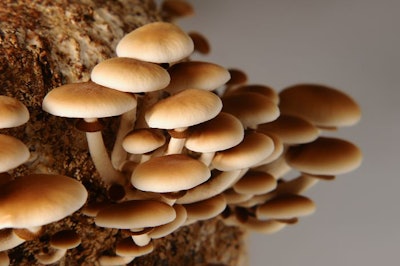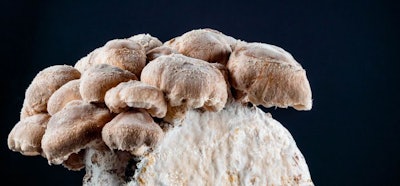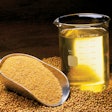
Overview of how innovations in mycelium-based meat alternatives may disrupt meat industry’s market share
Traditional animal proteins have been losing market share to the new and improved plant-based alternatives coming on the scene and consumers’ embrace of a “just another protein” mentality. While some alternatives have taken hold (plant-based dairy substitutes) and others have fallen a bit short of expectations (Beyond Meat), the global market for plant-based products is poised to exceed US$162 billion by 2030, accounting for 7.7% of the world protein market, according to Bloomberg Intelligence’s Plant-Based Foods Poised for Explosive Growth report.
Longer term, annual plant-based alt-protein sales may reach US$450 billion by 2040, reports AT Kearney, a U.S. consulting firm, prognosticating that the alternative conventional meat may account for up to 40% of total global “meat” consumption.
While innovations and investment in plant-based proteins have dominated headlines for several years, there is a new(er) player on the block, promising more value and consuming fewer resources: fungi – specifically, the use of lab-grown mycelium, a network of fine threadlike filaments, cultivated from fungal tissues, that produce the muscle-like structure to fungi-based meats. The shape, color and taste of these flavorless mycelial products are modified to taste like real chicken, beef, pork and seafood.
The global fungal protein market is expected to reach US$3.86 billion by 2030, registering a CAGR of 9.5% from 2021 to 2030, Allied Market Research reports.
Aren’t we just talking about mushrooms?
Yes and no. “Filamentous fungi (such as mushrooms) are formed by hyphae, small multicellular structures, which grow and branch giving rise to a complex network: the mycelium,” as defined by fungi-food producer Innomy.
Mycelium is “mushroom-related” but is cultivated using methods that do not produce the “fruiting bodies” (read: caps) but instead generated fibrous slabs also described as “bundle of branching fungi filaments.”
Large scale fungi-based products are produced via using two fermentation methods: solid state (trays), and submerged (continuous, tanks – think beer).
Rather than try to explain the science, here is the Good Food Institute’s explanation of how the fermentation process creates protein-rich meat alternatives:
“Biomass fermentation leverages the fast growth and high protein content of many microorganisms to efficiently produce large quantities of protein. The microbial biomass itself can serve as an ingredient, with the cells intact or minimally processed — for example, the cells can be broken open to improve digestibility or enrich for even higher protein content. This biomass serves as the main ingredient of a food product or as one of several primary ingredients in a blend. Examples of biomass fermentation are Quorn’s and Meati’s use of filamentous fungi as the base for their products.”
 Wladimir.B | BigStock.com
Wladimir.B | BigStock.comWhy are fungi-based meat alternatives so hot right now?
From a nutrition and environmental perspective, several key attributes make fungi-based foods very attractive to investors:
- Sustainable production: Mycelium production uses 1% of the energy, land and water of animal production. (Source: Meati)
- Rapid growth: Depending on the cultivation process, mycelium stocks can regenerate in days or weeks.
- Low input costs: Mycelium can be fed cheap, abundant food sources, such as sugars, byproducts and grains.
- Nutrient-rich product: Mycelium contains B vitamins, fiber, iron, zinc and antioxidants.
- Whole food, health appeal: The U.S. Department of Agriculture (USDA) classifies mycelium as a plant-based food, but unlike plant-based meat alternatives, mycelium products contain fewer ingredients and, of course, they are cholesterol free.
The ‘who’s who’ of the fungi-focused food space
Mimicking the rush to get in on the plant-based meat wave, biotech investors are eager to explore and support fungi-based meat’s potential.
ENOUGH (U.K.) – The producers of ABUNDA mycoprotein raised EUR42 million in Series B funding, lead by Nutreco and a handful of other investors.
Nature’s Fynd (U.S.) – Alt food company’s nutritional fungi protein is grown from a microbe found in the geothermal springs of Yellowstone National Park. It raised US$350 million in a Series C financing in 2021 — bringing the company’s total to more than US$500 million.
MycoTechnology (U.S.) – The company “utilizes fungi-based food-processing platforms to transform the flavor and value of agricultural products,” including its Goodside Foods pea-rice meat alternative protein fermented by mycelia. It recently raised US$85 million in series E funding.
Here is an overview of other movers and shakers in the mycelium-based alternatives sector:
Quorn (U.K.) — The only “mycoprotein” on the market is grown in fermentation tanks utilizing Fusarium Venenatum. The mycoprotein segment is set to hit a market size of US$894.9 million by 2026.
Innomy (Spain) – Startup uses fungal tissue cultures to replicate meat.
Meati (U.S.) – Mycelium products grown indoors, “a single spore of mycelium can be turned into the equivalent of a cow’s meat in just four days.”
Mycorena (Sweden) – Ingredient supplier produces fungi-based alternative protein for the food industry.
Aqua Cultured Foods (U.S.) – Startup utilizes patent-pending fungi stain to produce sushi-grade seafood alternative.
MyFOREST FOODS (US) — Formerly known as Atlast Food Co., this company sells whole-cut meat alternatives from gourmet mushroom mycelium. “Proprietary AirMycelium cultivation method, developed by its parent company, Ecovative, “offers control over mycelium’s shape and density as it grows, fine-tuning the same environmental factors present in its natural forest habitat.”
Fungi food outlook
Much like with the other novel protein alternatives, its ability to scale and come to market at a competitive price point will be a challenge for mycelium protein producers. However, with the positive outlook, global interest, new biotech and bountiful funding pouring in, fungi-based meats wield a lot of potential to seriously encroach on animal protein’s growth.
Keep an eye out for further coverage of alternative proteins for use in animal feeds in future iterations of the “Proteins of the Future” column written for WATTFeed’s Feed Mill of the Future coverage.
Announcing the Feed Mill of the Future digital supplement
WATT’s feed brands Feed Strategy and Feed & Grain magazines join forces to launch the monthly Feed Mill of the Future digital supplement. Each edition aims to provide animal feed industry stakeholders with forward-looking content, market insights and a spotlight on the leading-edge technologies shaping the global feed industry of tomorrow.
Subscribe today! https://bit.ly/3dWzow7













